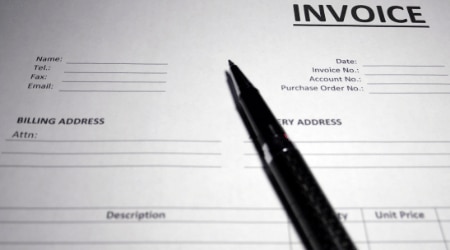For business owners who are experiencing cash flow problems, invoice financing could be the short-term finance solution you’ve been looking for. In this blog post, we’ll explain what invoice financing is, how it works, how much it costs, and if it may be a good fit for you and your business.
What is invoice financing?
Simply put, invoice financing is the process of turning outstanding invoices that you have issued to your customers into cash. Rather than having to wait for 30, 60, or even 90 days (depending on your terms) for a customer to make a payment, just send a copy of the invoice to your invoice financing provider. They will give you a cash advance, typically worth 75-90% of the invoice’s value, within as little as 48 hours (depending on your provider).
That means that rather than being strapped for cash while you wait for customers to make payments, you have the money to operate on a day-to-day basis and capitalise on opportunities when they come along.
How does invoice financing work?
The key benefits of invoice financing are speed and flexibility. Once you have an agreement with an invoice finance provider in place, you can raise money quickly and pick and choose which invoices you want to receive advances on.
This is how the process works:
- You send an invoice to your customers as usual
- You send a copy of the invoice to your invoice finance provider
- They pay you a cash advance worth an agreed percentage of the invoice’s value (this varies from provider to provider)
- Customers pay the invoice they owe and you collect your payment as normal or after a provider handles the process for you (depending on the type of agreement you have in place)
- You receive the remaining balance of the invoice minus the invoice provider’s fee
Types of invoice financing
There are two main types of financing when it comes to invoices. Although they are similar in that they both release funds from unpaid invoices, there are some important differences between them.
- Invoice factoring: In an invoice factoring arrangement, a factoring company takes control of a business’s sales ledger and credit control process for an ongoing basis over a fixed term, typically 12-24 months. During that time, the factoring company provides an upfront payment to you every time an invoice is sent to a customer. The factoring company is responsible for collecting the payment from the customer when it is due.
- Invoice discounting: Invoice discounting is more flexible as you can pick and choose which outstanding invoices you’d like to receive an advance on. You also remain responsible for credit control and collecting the payment from your customers. That can help to maintain the good relationships you have with them.
What is the difference between invoice discounting and factoring?
Both invoices discounting and factoring are potential solutions to dealing with slow cash flow. However, there are some crucial differences in the way the deals are structured.














